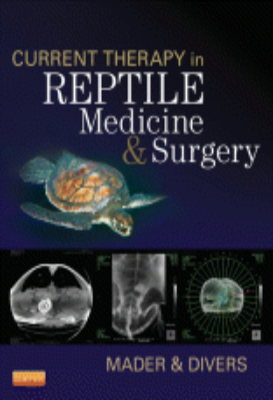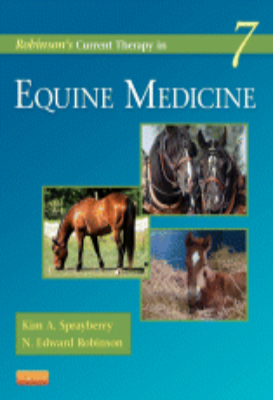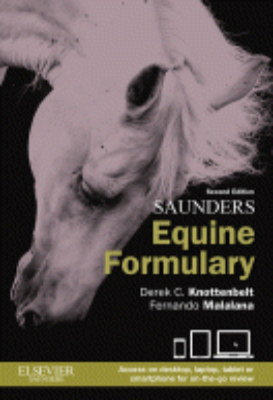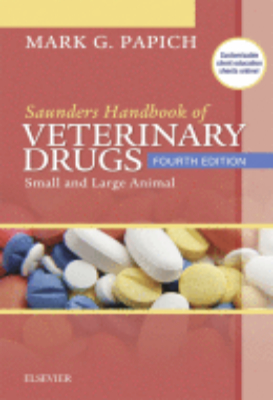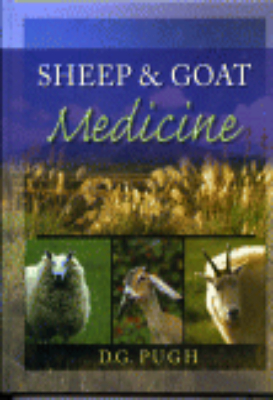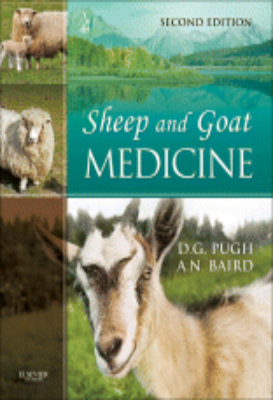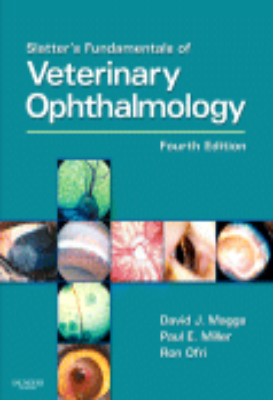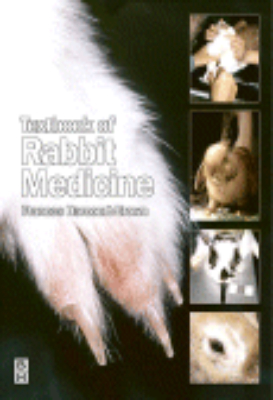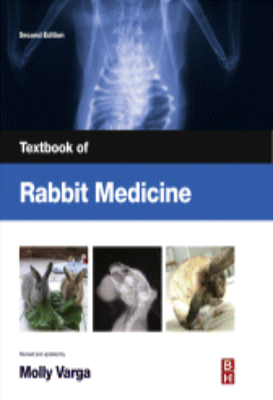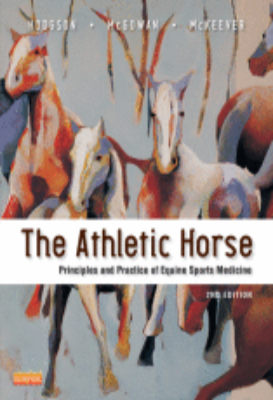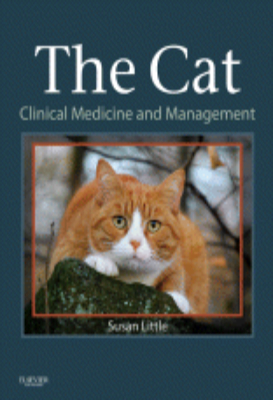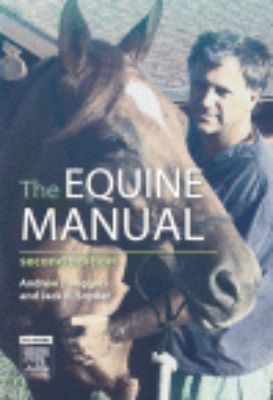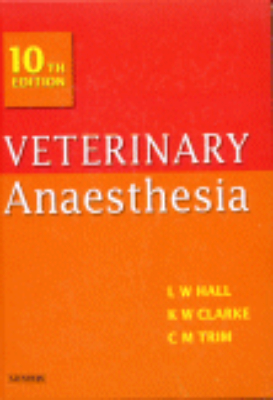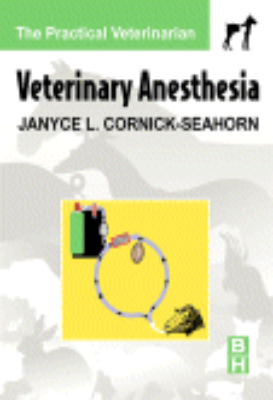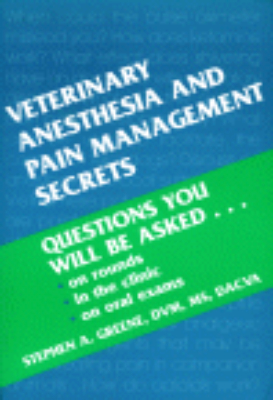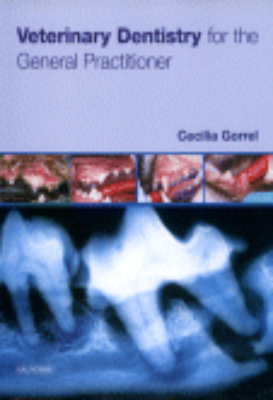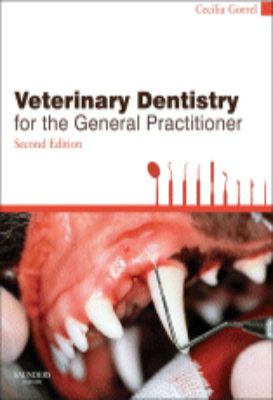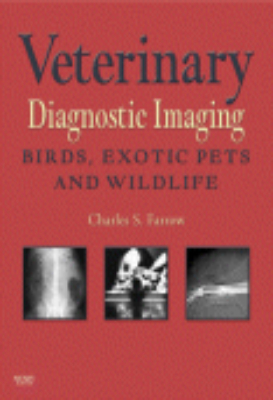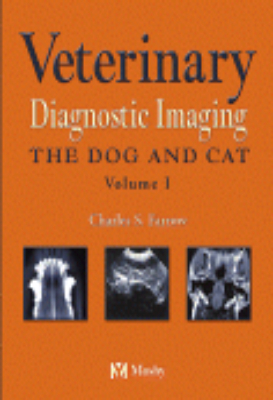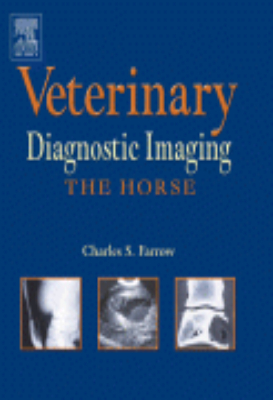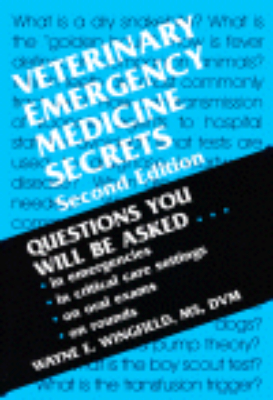E-Resources
Reptile Medicine and Surgery: 2014
Current Therapy in Reptile Medicine and Surgery is a valuable reference that emphasizes topics of real clinical relevance in reptile and amphibian medicine. With details on therapeutic regimens, this text also features coverage of infectious diseases, anesthesia, surgery, and advances in biology and conservation. Colorful illustrations showcase exotic animals, and numerous tables and figures provide quick access to essential information. "This is a great book for anyone interested in herptile medicine and surgery, worth every penny and I am sure will go on to become a regular series." Reviewed by: Jonathan Cracknell. Date: 25/07/2014
Rinderpest and Peste des Petits Ruminants
Rinderpest and Peste des Petits Ruminants tells the story of how, by the year 2010, scientists are set to globally eradicate one of the great historic plagues that has ravaged human livestock for centuries. Descriptions of the disease in Europe date back to the 4th century and it was regularly re-introduced following wars and other civil unrest until late in the 19th century. It was introduced with devastating effect into Africa towards the end of the 19th century and is now widespread across sub-Saharan Africa, the Middle East and Southern Asia. Its causative agent, rinderpest virus, a morbillivirus very closely related to human measles virus, decimates the cattle population along with those of other susceptible domestic ruminants and many wildlife species wherever it is present.
Robinson’s Current Therapy in Equine Medicine
With coverage of current issues and the latest therapeutic advances, Robinsons Current Therapy in Equine Medicine, Volume 7 provides a concise, all-new reference for the management of equine disorders and conditions. Chapters emphasize the practical aspects of diagnosis and treatment and provide details for therapeutic regimens. This new volume brings you thorough coverage and authoritative advice on selected topics in areas that have seen significant advances in the last five years. Cutting-edge topics include emerging and exotic infectious diseases that may endanger horses in North America; biosecurity strategies; imaging updates; medical genetics; multimodal pain management; and regenerative, geriatric, and oncologic medicine. A logical body-system organization will save you time in finding the information you need. From well-known editors Kim Sprayberry and N. Edward Robinson, with chapters written by nearly 200 equine experts, this invaluable reference provides unparalleled guidance on the latest issues in equine medicine.
Saunders Equine Formulary
A handy and portable guide to todays leading equine drugs, Saunders Equine Formulary, 2nd Edition makes it quick and easy to look up drug information when you need it most while youre in the field. And its more than a simple formulary: this book also provides benchmark values on vital signs and normal values so that you can correctly interpret diagnostic tests. This new edition is the only equine formulary available both in print and as an app for mobile use. Written by a world-renowned expert on equine medicine, Derek Knottenbelt, this book is an indispensable reference for equine veterinary practitioners, veterinary students, and others involved in breeding and keeping horses.
Saunders Handbook of Veterinary Drugs
Saunders Handbook of Veterinary Drugs, 4th Edition includes entries for 550 drugs, with convenient appendices summarizing clinically relevant information at a glance. New to this edition are 25 new drug monographs and easy access to drug content on any mobile device. Written by clinical pharmacology expert Mark Papich, this handy reference includes a companion website containing more than 150 customizable handouts with special instructions for your clients. It helps you find the specific drug facts and dosage recommendations you need to treat small and large animals, right when you need them!
Sheep & Goat Medicine
This text is designed as a user-friendly textbook for the mixed practice large animal veterinarian. The text covers all aspects (medicine, surgery, theriogenology, and nutrition) of sheep and goats. Descriptions of common medical and surgical and reproductive procedures appear throughout the textbook enhanced by many photographs, diagrams, and charts. It covers all major body systems, herd health, physical examination, nutrition, anesthesia, and multisystem diseases. It is a practical, easy-to-read reference.
Sheep and Goat Medicine
Authoritative yet easy to read, Sheep and Goat Medicine, 2nd Edition covers all the latest advances in sheep and goat medicine, including medical treatment, surgery, theriogenology, and nutrition. Full-color photographs and clear instructions provide the answers you need, guiding you through common procedures and techniques such as restraint for examination, administration of drugs, blood collection, and grooming; these descriptions are often accompanied by explanatory diagrams and charts. With diseases, surgeries, and treatments organized by body system, information is always easy to find. New to this edition are chapters on parasite control, nutritional requirements, and performing a necropsy. Developed by Dr. D.G. Pugh, a world-renowned expert on the medical care of sheep and goats, this reference is unmatched for its comprehensive coverage of herd health, physical examination, anesthesia, and multisystem diseases.
Slatter’s Fundamentals of Veterinary Ophthalmology
Recognize, diagnose, and manage a vast range of common and important ocular conditions with the latest edition of this trusted reference. Extensively revised and updated by a team of internationally respected contributors, this edition provides a comprehensive, yet practically oriented, diagnostic guide to ophthalmic disease, covering structure and function, ocular development, pathology, examination and diagnosis, pharmacology, and emergency management for a wide variety of small and large animal species.
Textbook of Rabbit Medicine: 2002
Although a lot has been written on the rabbit, much is anecdotal and aimed at the pet owner rather than the veterinarian. Textbook of Rabbit Medicine however, has been specifically written for the veterinary practitioner, using evidence-based material andproviding a comprehensive guide to the diagnosis and treatment of conditions affecting pet rabbits. Basic husbandry, behaviour and nutrition are explained within the concept of health and disease. Essential information on biology and physiology is also provided. Unique illustrations based on original dissections offer an additional insight into this complex animal.Frances Harcourt-Brown is a veterinary surgeon with a specific interest in rabbits. She is widely recognised as an expert and has been acclaimed for her research - receiving several awards, including the BSAVAs Melton award for meritorious contribution to small animal practicefor her work on dental disease in pet rabbits. Textbook of Rabbit Medicine says all there is to say about the pet rabbit: it is an essential purchase for every veterinary practitioner.With illustrations by Nigel Harcourt-Brown
Textbook of Rabbit Medicine: 2013
The new Textbook of Rabbit Medicine draws on the latest information from around the world to make it a truly global resource on all aspects of rabbit medicine and health. It will continue to be indispensable to veterinary surgeons in general practice, veterinary students, referral veterinarians specializing in exotic pets, and veterinary surgeons studying for certificates in advanced veterinary practice. The book is carefully constructed to allow for the biology, husbandry and clinical techniques that pertain to rabbit medicine to be treated comprehensively and conveniently. Clinical chapters follow a logical progression from clinical pathology, through anaesthesia, therapeutics and diseases covered by body system, to surgery and post-mortem examination. The author offers a strong emphasis on clinical practice to ensure the content is as practically useful and accessible as possible. Key points boxes integrated throughout the book provide a stand-alone prcis of important subjects. New clinical techniques boxes are packed with tips from a practising expert who regularly applies this same information in practice.
Textbook of Respiratory Disease in Dogs and Cats
Respiratory diseases are common and often challenging problems in dogs and cats. Animals with respiratory disease tend to have chronic, recurrent problems that are difficult to manage and do not respond easily to therapy. Alternatively, they may have acute, life threatening problems, with difficulty breathing and a high risk of death. Either type of patient can be very stressful to the veterinarian to manage! This textbook offers state-of-the-art advice about management of dyspneic patients, and patients with chronic recurrent disease. The chapters are all written by recognized experts in each specific subject area. The first parts of the book are organized to facilitate rapid use by presenting a problem-based approach to respiratory tract disease, and describing techniques for diagnostic testing and general support of patients with respiratory tract disease. The last section of the book provides an in-depth description of specific respiratory disorders, including their pathophysiology, diagnostics, expected clinical course and management.
The Athletic Horse
Showing how to maximize performance in horses, The Athletic Horse: Principles and Practice of Equine Sports Medicine, 2nd Edition describes sports training regimens and how to reduce musculoskeletal injuries. Practical coverage addresses the anatomical and physiological basis of equine exercise and performance, centering on evaluation, imaging, pharmacology, and training recommendations for sports such as racing and show jumping. Now in full color, this edition includes new rehabilitation techniques, the latest imaging techniques, and the best methods for equine transportation. Written by expert educators Dr. David Hodgson, Dr. Catherine McGowan, and Dr. Kenneth McKeever, with a panel of highly qualified contributing authors.
The Cat
Comprehensive in scope and exclusively devoted to feline medical care, Dr. Susan Little's The Cat: Clinical Medicine and Management is an essential resource for anyone who provides complete, state-of-the-art care to cats. In one convenient volume, you'll find authoritative, clinically-focused information enhanced by full-color illustrations, tables, boxes, algorithms, key points, and much more all in a format designed for quick access. Dr. Little and her expert contributors address the unique concerns and challenges facing the feline practitioner, including the latest advances in feline medical diagnosis and management and their clinical applications to everyday practice. User-friendly and complete, The Cat is also available as an e-book, giving you easy access to the complete, fully-searchable contents online.
The Dog Breeder’s Guide to Successful Breeding and Health Management
This unique resource offers a general overview of canine body systems and how each system affects the breeding process. Key topics include nutrition, pharmacology, microbiology, parasitology, vaccinations, genetics, and endocrinology, as well as normal anatomy and disorders of the male and female reproductive systems.
The Equine Manual
This second edition of the popular resource serves as a ready reference for equine practitioners. It provides comprehensive coverage of all aspects of equine medicine and many surgical conditions. It is a hands-on, user-friendly text aimed at the busy practitioner, veterinary students, specialist equine technicians and others with an interest in horse health. Covers new topics, including intensive care, the pre-purchase examination, equine behavior, and anesthesia (including euthanasia).
The Laboratory Mouse
Among animals used in research, teaching and testing, mice are now widely recognized as the most important model for human diseases and disorders. They comprise the majority of all experimental mammals and tend to be the model of choice used for research into many diseases/disorders including cancer, heart disease, asthma, Alzheimers, Down syndrome, deafness, osteoporosis, obesity, diabetes and even mental health research. Additionally the laboratory mouse continues to play a widely publicized vital role in the human genome project.One of the most time-consuming activities in research laboratories is looking up information specific to the species or strain of animal being used. This book, part of the highly successful Handbook of Experimental Animals series, allows the user quick access to any point of interest on the mouse as an experimental model.
The Laboratory Primate
A volume in the Handbook of Experimental Animals series, The Laboratory Primate details the past and present use of primates in biomedical research, and the husbandry, nutritional requirements, behaviour, and breeding of each of the commonly used species. Practical information on regulatory requirements, not available in other texts, is covered. Sections on experimental models cover the major areas of biomedical research, including AIDS, cancer, neurobiology and gene therapy. Assisted reproductive technology, tissue typing, and minimum group sizes for infectious disease/vaccine studies are also included.
The Laboratory Rat
This reference series will provide all researchers using laboratory animals with comprehensive practical information on the various species. Each title in the series is devoted to a particular species, and draws together all available data in a "one-stop", easily accessible source. Each has similar format, with sections on the strains available, their husbandry, and special diets. Also included are sections on gross anatomy, endocrinology, and reproduction, followed by more detailed sections on neuroanatomy, vasculature, cell biology, and histology of particular organs and structures, and a section on molecular biology. High quality illustrations are included throughout and a color plate section is provided. A glossary, list of equipment suppliers, and "Quick Reference Section" are added features. The "Quick Reference Section" brings together all tables from the text, allowing readers to find data swiftly. The first volume in The Handbook of Experimental Animals Series, The Laboratory Rat, provides researchers in academia and industry using laboratory animals with comprehensive, practical information on the species. The Laboratory Rat has been divided into eight sections dealing with:* Strains and their selection for research* Housing and maintenance* Pathogens and diseases* Breeding and reproduction* Anatomy* Physiology* Procedures, including experimental surgery* Emerging techniques, including genetic engineering and molecular technology
The Laboratory Rat: Second Edition 2006
The Laboratory Rat, Second Edition features updated information on a variety of topics including: rat genetics and genomics, both spontaneous and induced disease; state-of-the-art technology for housing and husbandry; occupational health, and experimental models. A premier source of information on the laboratory rat that will be of interest to veterinary and medical students, senior graduate, graduate students, post-docs and researchers who utilize animals in biomedical research.
Veterinary Anaesthesia; 2014
An acknowledged classic in its field, Veterinary Anaesthesia 11th edition has undergone a thorough revision to bring you the latest information in a more accessible format than ever before. The book meets the needs of several groups. For students, it provides basic concepts and how to advice on anaesthetizing animals. For veterinarians in practice or those working with laboratory animals its an excellent reference that draws on both the considerable experience of the authors and on published scientific data. Those wishing to specialize in veterinary anaesthesia will find it a stimulating introduction to the subject. This revision has been expanded to incorporate evidence-based information, additional chapters on advances in analgesia, anaesthesia of small mammals, fish and wildlife, and updated information on cardiopulmonary cerebral resuscitation (CPCR). The wide range of species covered and the clear descriptions of basic principles, techniques and equipment, coupled with an extensive literature review, make Veterinary Anaesthesia 11th edition your essential companion whether in classroom or in clinic.'The before, during, after, how and why of every anaesthesia is clearly explained in this thorough "anaesthesia" bible ... No doubt this will be a reference throughout your professional career, whatever path you follow'. Reviewed by: Fabienne Dethioux , Tomorrow's Vets Date: December 2014 "The layout is attractive and easy to use, and the book covers both general principles and practical advice. It should be on the shelves of every veterinary practice and in every students library." Reviewed by: Polly Taylor. Date: July 2014
Veterinary Anaesthesia: 2001
New edition of this essential text covering anaesthesia and analgesia in all large and small animal species. The new edition has been extensively revised and contains greatly expanded sections on anaesthesia of exotic species such as small mammals, llamas, camels and also a new section on anaesthesia of wild animals, both large and small, and birds.The book is divided into 3 sections: Section 1. Principles and Procedures - covers pharmacology and pharmacokinetics, monitoring, sedation, premedication and much more; Section 2. Anaesthesia of the Species- comprises chapters on anaesthesia in all the main species; Section 3. Special Anaesthesia - covers anaesthesia in special cases, complications and crises!Almost 200 prints and line illustrations enhance the comprehensive text, and make the new edition of Veterinary Anaesthesia 10/e an essential purchase for all vets!
Veterinary Anesthesia and Pain Management Secrets
The highly popular Secrets Series presents an important new resource for veterinarians in this comprehensive, yet focused, coverage of one of the most important and fastest-emerging specialties in veterinary medicine. Among the topics covered are Patient Management, Preparation, Pharmacology, Monitoring, Anesthetic Complications, Anesthesia and Systemic Disease, Special Anesthetic Considerations, Regional Anesthesia, and Pain Management for Small Animals.
Veterinary Clinical Pathology Secrets
Part of the popular SECRETS SERIES, this all-new text provides essential, practical information for reviewing pathology commonly encountered in clinical situations. Organized by disorder type, it features numerous photos, a popular question-and-answer format, and a detailed index that makes it easy to find information quickly. In more than 50 chapters, expert contributors propose key questions and provide authoritative answers addressing the situations that confront small animal veterinarians every day.
Veterinary Dentistry for the General Practitioner: 2004
Everything the veterinary practitioner needs to know about commonly-presenting small animal dental disease. This is a practical manual on the most commonly-presenting problems encountered in small animal practice with how-to-do it techniques and practical tips from a world authority on small animal dentistry.
Veterinary Dentistry for the General Practitioner: 2013
The new edition of Veterinary Dentistry for the General Practitioner has been thoroughly revised and updated to ensure it continues to meet the needs of todays veterinarians and veterinary students. The book offers all the theoretical knowledge and practical help any general practitioner needs in order to practise good dentistry, providing comprehensive and detailed knowledge of how to diagnose, prevent and treat common oral conditions in the dog and cat. It also presents information as to diagnosis and initial management of less common diseases, where the ultimate treatment will generally be performed by a specialist but the general practitioner needs to be able to identify a problem and have a basic understanding of the pathophysiology of the tissues involved. Dental conditions of lagomorphs and rodents are also covered. In its new second edition Veterinary Dentistry for the General Practitioner remains the complete resource for the general veterinarian and unique in its detailed focus on common dental conditions.
Veterinary Diagnostic Imaging: Birds, Exotic Pets and Wildlife
With a focus on birds, reptiles, and mammals, Veterinary Diagnostic Imaging: Avian and Exotic Pets discusses veterinary diagnostic imaging and new technologies for multiple modalities to help you accurately diagnose and pinpoint common injuries and disease. Divided into three sections Birds, Mammals, and Reptiles each section includes valuable information on positioning for specific structures, imaging findings, and more for each species with a wealth of photographs to provide real-life examples.
Veterinary Diagnostic Imaging: The Dog and Cat
This book is the first of three volumes in the Veterinary Diagnostic Imaging series, focusing on veterinary diagnostic imaging and the new technologies available to help diagnose and pinpoint disease in dogs and cats. More than a textbook, this resource is designed to be a valuable tool for self-directed learning. Its consistent organization and well-referenced, extremely thorough text takes the reader through normal anatomy and positioning, followed by imaging for specific structures. General observations and specific problems are discussed including trauma/fracture, infection, and neoplasm. In addition to its focus on radiology, discussions of supplementary imaging are presented where appropriate. Additional imaging includes ultrasound, CT, and MRI.
Veterinary Diagnostic Imaging: The Horse
Focusing on the horse, this practical text is the second in a series of three to focus on veterinary diagnostic imaging and the new technologies available to help diagnose and pinpoint disease. Like Veterinary Diagnostic Imaging: The Dog and Cat, Veterinary Diagnostic Imaging: The Horse is organized by region with specific structures addressed within each region. Coverage includes background information, normal anatomy, and positioning for specific structures, followed by imaging findings and specific problems such as trauma/fracture, infection and neoplasm. The main focus of this book is radiology, with supplementary information on ultrasound, CT, and MRI.
Veterinary Emergency Medicine Secrets
The fact that all veterinarians see emergencies on a regular basis, and the increasing importance of emergency medicine and critical care in veterinary medicine, have helped make this one of the best-selling books in The Secrets Series and in veterinary medicine and critical care. Dr. Wingfield is one of the preeminent authorities in this field, and the new edition is completely revised and updated, featuring a number of new authors, with new chapters on disaster medicine and the transfusion trigger. Critical care management of dogs and cats are also covered.

